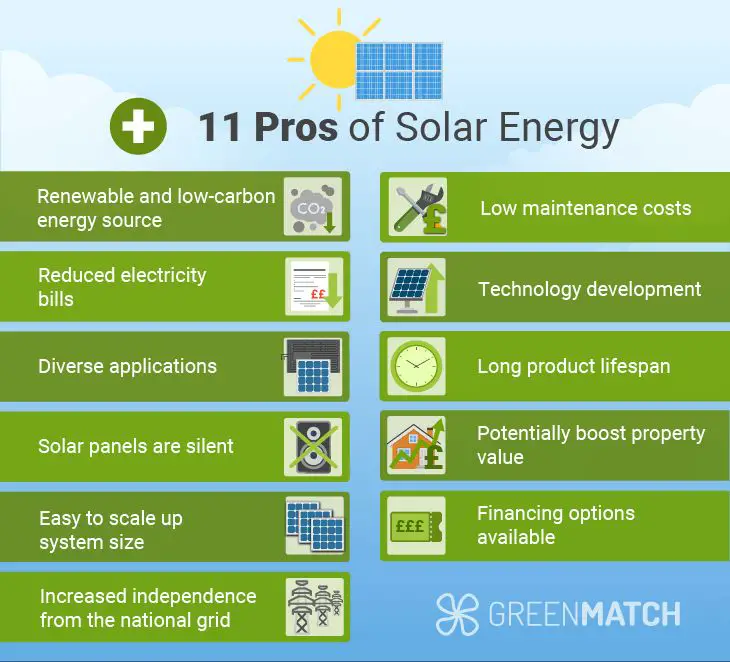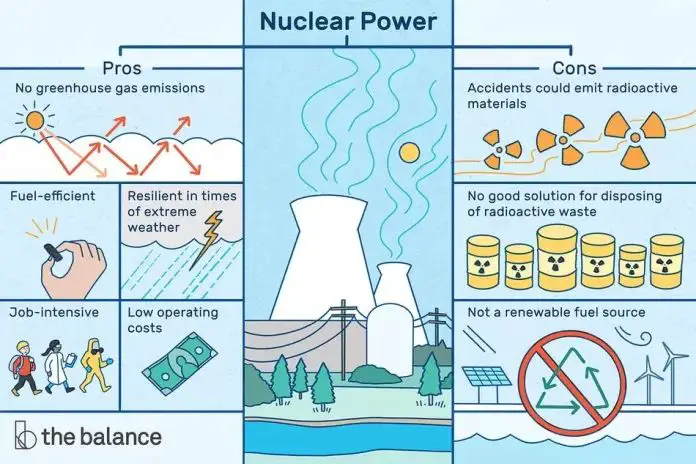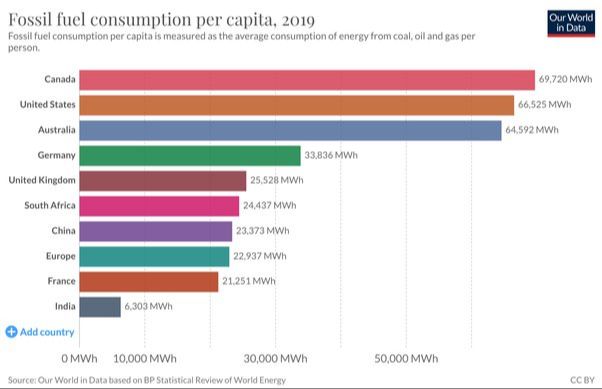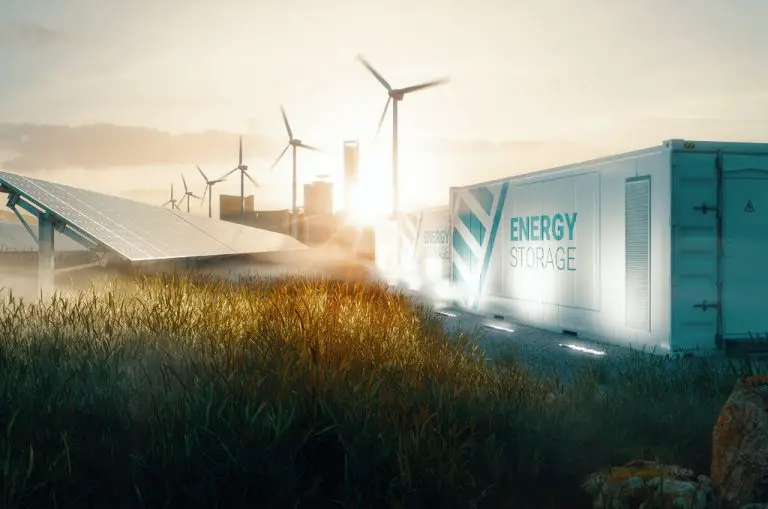What Are The Pros And Cons Of Switching To Renewable Energy?

Renewable energy comes from natural sources or processes that are constantly replenished, such as sunlight, wind, rain, tides, waves, and geothermal heat (https://www.un.org/en/climatechange/what-is-renewable-energy). There has been increasing interest and debate around switching from fossil fuels like coal and natural gas to renewable energy sources. Proponents argue renewable energy can reduce greenhouse gas emissions, provide energy independence, create jobs, and have other benefits. Opponents cite challenges like high costs and intermittent supply. This article will examine the key pros and cons of switching to renewable energy to inform the debate.
Pros of Switching to Renewables
There are several major benefits to switching to renewable energy sources like wind, solar, geothermal, hydroelectric, and biomass:
Reduced Greenhouse Gas Emissions
According to the EPA, renewable energy results in far lower greenhouse gas emissions compared to fossil fuels like coal and natural gas (source). This can significantly reduce a region’s carbon footprint and help mitigate climate change.
Energy Independence
Because renewable sources like wind and solar are available domestically, relying more on renewables decreases our dependence on imported fossil fuels. This improves energy security and resilience (source).
Cost Reductions
Although renewable systems often have higher upfront costs, studies show they can provide long-term cost savings. As technology improves, the costs of renewables continue to fall.
Job Creation
Developing renewable energy creates jobs in manufacturing, construction, maintenance, and more. The renewable sector already employs millions worldwide.
Less Pollution
Unlike fossil fuels, most renewables like solar and wind produce no air pollution or hazardous waste. This improves public health and environmental quality.
Cons of Switching to Renewables
While renewable energy provides many benefits, there are also some challenges with transitioning from fossil fuels to renewable sources. Two major cons are the high upfront costs and the intermittency of supply.
Installing renewable energy systems like solar panels or wind turbines requires large initial investments. According to the International Energy Agency, the global investment required for renewable power generation capacity and grids would need to more than triple over the next decade to put the world on track for net-zero emissions by 2050 (source). These high capital costs can deter adoption, especially in developing countries.
The intermittent nature of renewables like wind and solar also poses grid integration challenges. Energy supply fluctuates based on weather conditions and time of day. This requires developing affordable energy storage solutions and flexible grids to match supply with demand (source). Places with less developed infrastructure struggle with the variability of renewable generation.
While costs are decreasing over time, governments may need to provide subsidies or tax incentives to accelerate the transition to renewable energy despite the higher upfront investment required.
Pro: Reduced Greenhouse Gas Emissions
Switching to renewable energy sources like wind and solar power can significantly reduce greenhouse gas emissions compared to fossil fuels. According to the UN, renewable energy emits little to no greenhouse gases and could provide over 90% of the necessary reductions in carbon emissions source. Research shows that a transformed energy system based on renewables and increased efficiency could reduce energy-related carbon emissions by over 90% source. This massive reduction in emissions is possible because renewable sources like solar, wind, and hydropower don’t burn fuels and produce little to no greenhouse gases in their operation.
Fossil fuels emitted nearly 33 billion metric tons of carbon dioxide in 2018, accounting for almost 90% of all man-made carbon dioxide emissions that year. Switching to renewable sources provides a clear pathway to reducing the greenhouse gas emissions that are driving climate change.
Pro: Energy Independence
Switching to renewable energy from domestic sources like wind, solar, hydropower, geothermal, and biomass can provide greater energy independence and security for a country. Relying more on domestic renewable sources means reduced dependence on imported fossil fuels from other nations. This gives a country more control over its energy supply and reduces vulnerability to global market changes or political instability in fossil fuel producing regions.
For example, the U.S. could source most or all of its electricity from domestic wind, solar, hydropower, geothermal and biomass instead of importing millions of barrels of oil per day. This would reduce the risk of supply disruptions and price spikes caused by events in the Middle East or other regions. Energy independence through renewables also has national security benefits as fossil fuel dependence often motivates foreign policy decisions. With greater energy independence, a nation’s foreign policy can be more flexible and focused on other priorities.
According to the U.S. Department of Energy, renewable energy paired with energy efficiency improvements could eliminate most U.S. imports of foreign oil within 15-20 years, providing much greater energy security (Source: https://www.energy.gov/eere/energy-independence-and-security).
Pro: Cost Reductions
The costs of renewable energy have fallen dramatically in recent years. According to the UN, between 2009 and 2019, the price of large-scale solar photovoltaics decreased by 89% (https://www.forbes.com/sites/christinero/2022/09/14/renewable-energy-costs-have-dropped-much-faster-than-expected-but-theres-a-catch/). The International Renewable Energy Agency (IRENA) found that solar PV module prices fell by almost 25% in 2020 alone, reaching a global average of $0.38 per watt (https://www.irena.org/-/media/Files/IRENA/Agency/Publication/2017/Nov/%20IRENA_Sharply_falling_costs_2017.pdf).
These cost reductions are projected to continue as renewable technology improves and scales. IRENA predicts the cost of onshore wind power will fall 15% by 2025 and solar PV costs will be 60% lower. The levelized costs of electricity from renewables is already competitive or cheaper than fossil fuels in many markets. As costs continue to decline, renewable energy will become even more affordable.
Lower renewable energy costs make them an attractive option financially. The investment needed upfront is compensated by decades of low-cost power production. Renewables can help stabilize energy prices and reduce costs for consumers long-term as they supplant more expensive fossil fuel generation.
Pro: Job Creation
Switching to renewable energy like wind and solar can create significant job growth, often more jobs per unit of energy than fossil fuels. According to a 2022 IRENA report, renewable energy employed 12.7 million people globally in 2021, with solar PV and biofuels being the largest employers. The US Department of Energy estimates that 3.4 million Americans already work in clean energy, outnumbering fossil fuel jobs by 3 to 1. With the continued expansion of renewables, the DOE projects clean energy jobs could reach 8 million in the US by 2030. One reason renewables create more jobs is because technologies like rooftop solar involve more labor for installation and maintenance compared to centralized fossil fuel plants. Overall, transitioning to renewables provides major employment opportunities across manufacturing, construction, installation, and operations/maintenance.
Pro: Less Pollution
Renewable energy sources like solar, wind, and hydropower produce significantly less air and water pollution than fossil fuels. Burning fossil fuels for electricity emits large amounts of sulfur dioxide, nitrogen oxides, particulate matter, and heavy metals like mercury, which contribute to acid rain, smog, respiratory illnesses, and neurological damage (1). In contrast, renewable energy systems produce little to no air or water emissions while generating electricity.
According to the UN, shifting to renewable energy could prevent up to 6.5 million air pollution-related deaths annually by 2050 (2). Additionally, a life cycle assessment by the Union of Concerned Scientists found that renewable electricity generation causes air pollution damages averaging 1.7 to 5.2 cents per kWh, compared to fossil fuel damages of 4.8 to 41 cents per kWh (3). This evidence clearly shows the massive pollution reduction potential of transitioning to renewable energy.
Sources:
(1) https://www.ucsusa.org/resources/environmental-impacts-renewable-energy-technologies
(2) https://www.un.org/en/climatechange/raising-ambition/renewable-energy
(3) https://blog.ucsusa.org/mark-specht/renewable-energy-saves-lives/
Con: High Upfront Costs
One of the biggest barriers to adopting renewable energy sources is the high upfront costs compared to fossil fuels. Building large-scale solar farms, wind turbines, geothermal plants, and other renewable infrastructure requires substantial initial investments. According to the Clean Energy Ministerial, the high capital costs and financing challenges are often cited as the primary obstacle to renewable energy growth.
The Washington Post reported that renewable energy prices are rising due to supply chain disruptions, inflation, and raw material shortages. While fossil fuel plants can operate for decades, renewable energy projects depend heavily on upfront expenditures. The U.S. Department of Energy found the overnight capital costs per kW of capacity for renewable technologies were 1.5 to over 4 times higher than natural gas.
So while ongoing costs of renewables are very low, the initial investment can be 2-5 times more than conventional sources. Utilities and developers must secure large financing packages before receiving any energy or revenue from renewable plants. However, costs are steadily decreasing as technology improves, and various incentives can offset the upfront burden.
Con: Intermittency
One of the main challenges with renewable energy sources like solar and wind is that they are intermittent, meaning they are not available on demand 24/7 like fossil fuels and nuclear power. The sun doesn’t always shine and the wind doesn’t always blow when energy is needed. Intermittency can cause issues with matching energy supply and demand on the grid, leading to potential blackouts.
The intermittency of solar energy depends on the time of day, weather, and seasons. Solar output can fluctuate minute to minute with passing clouds. Wind power can also vary greatly, depending on wind speeds. According to a Scientific American article, the variability of wind and solar in some places can be 50-75% in a given month.
Potential solutions for renewable energy intermittency include better forecasting of solar and wind patterns, energy storage using batteries and pumped hydro storage, geographic distribution of renewable sources, demand response technology to shift energy usage, and having backup power sources.




